What Makes a High-Quality Extension? Key Features to Look For
When it comes to expanding your living space, not all home extensions are created equal. High-quality extensions stand apart through...
Read MoreLast Updated: 29 April 2025
Over the last few years people have become steadily interested in vintage style. Recently many homeowners have been looking to emphasise existing vintage features in their homes, or create some. Here’s a list of 10 vintage features of a Victorian home to help you achieve that classic, vintage style for less.
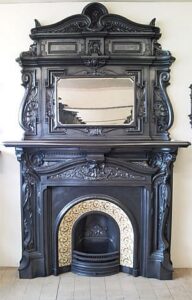
In a Victorian home, every room would have a fire place. In this period, modern central heating as we know it did not exist. Electric heating was non-existent, and yet to be perfected for another 50 years. The contemporary heating solution, if you could afford it, was to have a fireplace in every room, allowing you to heat all areas of the house in the winter. These fireplaces were often ornately and intricately carved. Interestingly, the Victorian obsession with fireplaces has its roots in the medieval period. In that period, it was a generally accepted fact that you could measure the economic and social status of a family by how many chimneys they possessed on their house, and thus, how many fires they could afford to keep going at any one time. A great ornamental fireplace is the perfect vintage feature of a Victorian home.
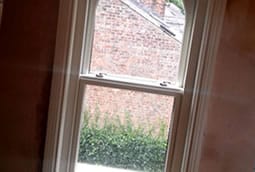
Nothing says vintage style more than real timber sash windows. Although at the time they had garnered an infamous reputation for being draughty, technology has come a long way since the Victorian period. Now modern timber sash windows really can compete, and even surpass, their uPVC equivalents. High quality timber sash windows have a much longer lifespan than uPVC ones and have great solar gain, which means that they are excellent at keeping heat in a home during winter, but reflecting sunlight and keeping it cool during the summer.
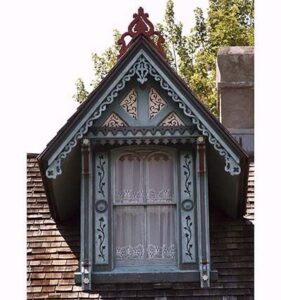
Bargeboards are timber boards fastened to the projecting gables of a roof, designed to increase roof strength and to mask the ends of the horizontal timbers that they are attached to. During the Victorian period they started to become increasingly ornamental, with elaborate wood carvings and complex designs. On many Victorian end-of-terrace houses you may be able to spot them. If your property dates from this period, bargeboards are great vintage features of a Victorian home that are relatively easy to create.
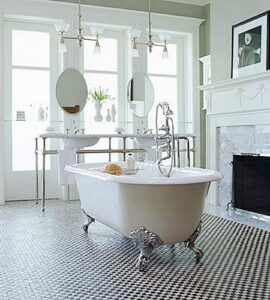
The development of metal-working technology in the Victorian period, thanks to the Industrial Revolution, meant that iron could be cast in increasingly larger moulds. The direct result for homeowners (if you were wealthy enough to afford one, and were lucky enough to have indoor plumbing) were some pretty impressive, cast iron baths.
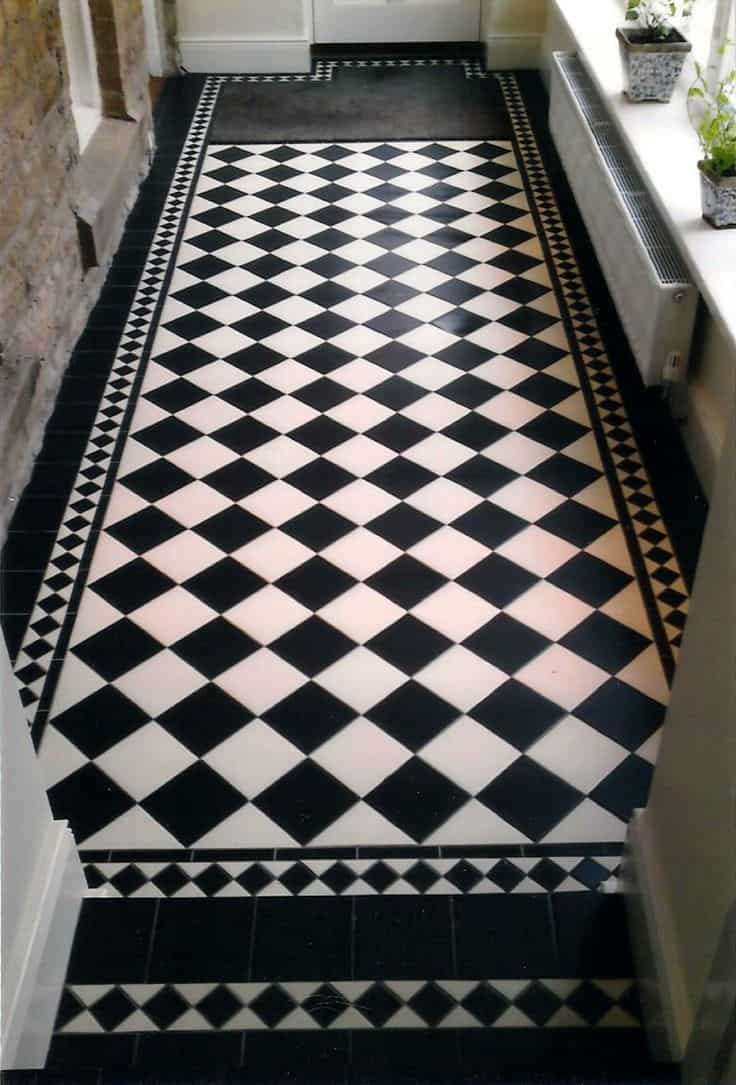
Perhaps one of the most common motifs in Victorian design is the geometric black and white chequer pattern. This was generally used for tiled floors and can often be in more work orientated areas throughout the Victorian home, such as sculleries, pantries and kitchens. The starkly ordered, and neatly arranged blocks of the pattern seem to reflect the Victorian values of traditional, stability and order very well.
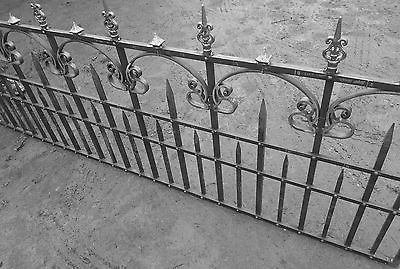
The Industrial Revolution revolutionised the mining and metalworking industries in the UK, making the extraction of metal ores more efficient and creating a boom in the availability of relatively cheap and plentiful iron. This resulted in more Victorians investing in intricately designed cast iron railings. Adding some of this to your home will create a beautiful vintage feature.
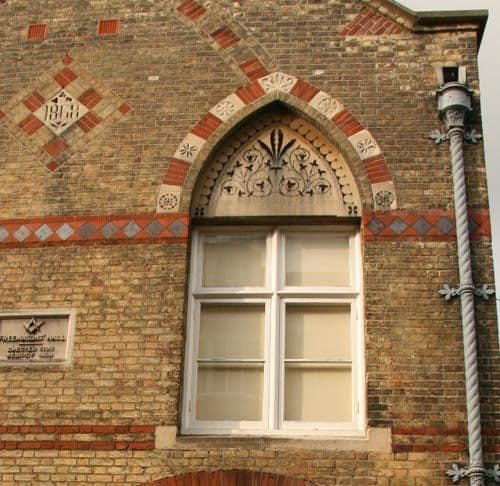
The explosion of railways across the UK in the Victorian period meant that goods could be much more easily transported across the country. A result of this free movement of materials was increasingly intricate and complex patterns of different types of bricks. These could be found everywhere around the Victorian home: from flooring in the porch, paving in the garden to even the walls of the house itself.
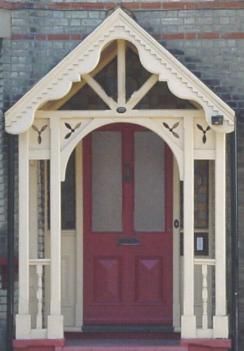
Victorians were also very fond of creating large entrance porches. Often decorated with mosaics and complex tiling patterns, these porches were designed to show off the wealth of their owners and exude grandeur. Creating a similar porch on your home is an easy task for a home improvement company and adds a great vintage feature to your property.
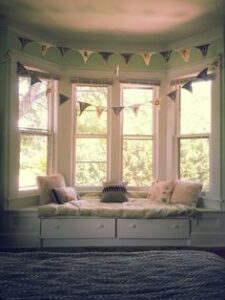
Three-sided timber bay windows with a projecting sides became very fashionable during the Victorian period. The invention of improved plate glass in 1832 enabled bigger glass panes to be manufactured. This resulted in a range of impressive window systems that maximised light and improved the quality of life for many people. Before this development windows had to be made of many smaller panes, which didn’t transmit as much light and made rooms feel particularly dark. The Victorian bay window is a perfect example of how people used this new technology to their advantage.
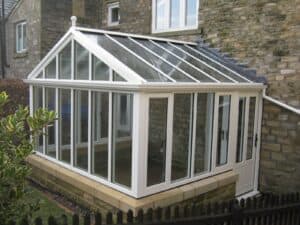
The height of Victorian elegance, the conservatory was, and still is, the ultimate statement of refinement and opulence in a property. Conservatories were originally a form of greenhouse; a winter sheltering place for citrus plants to enable them to survive the harsh Northern European climate. During the Victorian period, conservatories began to take on more a social use. They provided a place where people could entertain friends and guests over tea, surrounded with exotic plants gathered from every corner of the British Empire.
Reddish Joinery are a local timber and uPVC window, door and conservatory installer based in Reddish, Stockport. With over 30 years’ experience and expertise of manufacturing and installing bespoke home improvement products, we are the perfect company to choose if you’re looking to get that vintage, Victorian style in your property.
When it comes to expanding your living space, not all home extensions are created equal. High-quality extensions stand apart through...
Read MoreWhen it comes to painting wooden windows, achieving the perfect finish requires more than just picking up a brush and tin of paint. Whether you're refreshing existing frames or updating your home's exterior colour scheme, proper preparation and technique are essential for long-lasting, professional results.
Read MoreAt Reddish Joinery, we've been crafting bespoke orangeries for over 60 years, and we're here to share our expertise on making the most of limited space with our selection of small orangery ideas.
Read MoreIf you’re considering adding an extension to your home, you may be wondering what’s the difference between a conservatory and...
Read More